Once monthly, the New York City Writing Project celebrates the teacher-as-writer by publishing works of poetry and prose written by its teachers. If you are interested in submitting your work to NYCWP Voices, please read the submissions guidelines and submit your work by email to voices@nycwritingproject.org.
Shock
-Meny Beriro
CHARACTERS:
Annie, in her 40s
Beatrice, in her 40s
Lights up on ANNIE and BEATRICE. They are staring at a work of art in an art gallery.
ANNIE
So . . .
BEATRICE
Intense —
ANNIE
How do I —
BEATRICE
You can’t.
ANNIE
Then . . .
BEATRICE
Release —
ANNIE
How?
BEATRICE
Inside —
ANNIE
I feel so . . .
BEATRICE
Don’t describe -– just feel -–
ANNIE
My god! My god! My god! . . . Who knew this was possible?
BEATRICE
Why do you think I was always inviting you? But of course Simon told you art was a waste of time —
ANNIE
Don’t remind me . . . a minute ago everything was normal – this was unimaginable —
BEATRICE
You’ve heard of the Big Bang – all it took for the entire universe to come alive was the tiniest fraction of a second . . . you’ve had a whole minute —
ANNIE
Everything is moving so fast — Lamborghini fast —
BEATRICE
When were you in a Lamborghini?
ANNIE
Never — but I’ve always wanted —
BEATRICE
The faster – the better – right?
ANNIE
You bet . . . this is very scary —
BEATRICE
It has to be – we’re not in a laundry – we’re not chewing gum watching shirts dry. Art — real art — has to challenge you – question every pre-conceived notion . . . we are at its mercy —
ANNIE
Oh, my God. It’s getting stronger – never mind Lamborghini – more like a bullet train in Japan —
BEATRICE
Ride it . . . you’ve never been to Japan, have you?
ANNIE
Not even close.
BEATRICE
Dave wants to take me there for our —
ANNIE
My God! This is so unique – I’ve never felt like this —
BEATRICE
Actually, it’s quite common —
ANNIE
Really? A cold is common. Not this. Definitely not this.
BEATRICE
Trust me — I’ve had it worse —
ANNIE
Is this safe?
BEATRICE
Of course not. Imagine what it was like when the universe was created. The energy released – the forces unleashed the possibilities – always expanding – forever and ever – meaning this very second – something that’s once nothing
(She snaps her finger)
. . . is now part of the universe . . . a month ago — this space was empty and now look. Look.
ANNIE
My God! You can’t just go back after this —-
BEATRICE
Back where?
ANNIE
Nowhere.
BEATRICE
You’re living —
ANNIE
Here.
BEATRICE
Now.
ANNIE
If only Simon —
BEATRICE
Don’t –-
ANNIE
I’m just thinking – if we‘d had more moments like this —
BEATRICE
More. Did you ever even have one?
ANNIE
You want to know something? It’s no longer feeling like a Japanese bullet train — it’s now more like Amtrak.
BEATRICE
Then you’ve definitely had enough.
BEATRICE pulls her away from the artwork.
BEATRICE (Cont’d)
Wait until you see the next one —-
ANNIE
Another?
BEATRICE
We’ve just begun —
ANNIE
It’s too much – I don’t even recognize myself —
BEATRICE
How beautiful . . . get ready to be assaulted again —
ANNIE
I can’t handle any more —
BEATRICE
Sure you can.
ANNIE
I’m very fragile —
BEATRICE
Good. Then let yourself break. Into a billion pieces. Don’t be afraid. You’ll only heal if you’re free. Let go – like you let Simon go — I’m so proud of you. Why you stayed with him all these years with his annoying rituals –-
ANNIE
You mean like flossing his teeth eighteen times a day?
BEATRICE
Only eighteen?
ANNIE
I don’t like to badmouth him. Pun intended.
They both laugh.
BEATRICE
Good riddance. You lucked out.
ANNIE
Well, he sort of left me —
BEATRICE
Yeah, but that didn’t stop you. You were brave enough to let him go. You didn’t cling. Clinging is so pathetic. We’re not socks. And you realized that.
ANNIE
Did I?
BEATRICE
Of course you did. Look at the big picture. Simon went on to marry his dental hygienist. They deserve each other. You deserve more than clean teeth.
ANNIE
I’m still working it out.
BEATRICE
What are you talking about? I’ve never seen you look better.
ANNIE
Really?
BEATRICE
Really! You’ve lost weight –
ANNIE
It’s the result of my depression diet —
BEATRICE
You’ve got nothing to be depressed about –
ANNIE
Every morning when I begin brushing – it all comes back to me – I see him in the mirror laughing at my gums with his shiny —
BEATRICE
Stop it . . . Here it is.
They stop to view the work of art.
BEATRICE (Cont’d)
Well?
ANNIE
I don’t know.
BEATRICE
You’re not feeling it?
ANNIE
Not yet.
BEATRICE
Then you’re not feeling it.
ANNIE
Let’s give it some time.
BEATRICE
Time has nothing to do with it.
ANNIE
Maybe it’s me. What do you feel?
BEATRICE
I don’t want to influence you.
ANNIE
Maybe the other one was so strong — I can’t feel anything anymore –-
BEATRICE
You’re numb — it happens —
ANNIE
We should go —
BEATRICE
Dave is coming by with a very debonair colleague -– you ought to meet him —
ANNIE
I’m not ready to meet new –-
BEATRICE
Darling — you’re ready. So ready. Anything?
ANNIE
Nothing.
BEATRICE
Do you want to go back and see the first one again?
ANNIE
Why?
BEATRICE
You’ll find something new — great art is very philanthropic – it never stops giving —
ANNIE
It won’t be the same –-
BEATRICE
Do you want it the same?
ANNIE
I don’t know what I want.
BEATRICE
Let’s try one more.
ANNIE
What if I don’t feel anything again? I’ll start worrying I might have done serious psychological damage with all the intensity of the first piece -– short-circuited my brain somehow – I’ll have to get therapy which I really can’t afford right now –
BEATRICE
You’re making this way too complicated —
ANNIE
Really? My toaster was an excellent dependable toaster — had it for eight years – never a problem – okay once in a while a piece of bread might get jammed – no big deal — but I had to bring home a bagel – okay it was a huge bagel — and my poor little toaster just couldn’t handle it – went belly up — overload – now it’s in some filthy dumpster somewhere instead of my nice kitchen —
BEATRICE
You’re not a toaster – you’ll survive. Come on – one more –
ANNIE
I just think it’s too risky —
BEATRICE
What’s wrong with risk? It’s the essence of art —
ANNIE
For the creator –- not the observer –-
BEATRICE
You’re a part of the art –- how you view it –- live in it — is part of the art — if it’s lying inside a closet and no one is interacting with it –- it’s nothing –-
ANNIE
I’ve gone through a lot this year –- my divorce from Simon –- my mother in the nursing home –- my own health issues with high blood pressure – not to mention my daughter running away with an aspiring bank teller — I really should play it safe –-
BEATRICE
Then why did you insist on coming?
ANNIE
I wanted something to get my mind off my problems –
BEATRICE
Exactly. Try one more –- come on you can do it –- I promise this will be the last one.
ANNIE
Fine. I really shouldn’t –-
They move on to view the next work of art.
BEATRICE
Well?
ANNIE
I can’t believe it.
BEATRICE
What?
ANNIE
I’ve been waiting for this my entire life –
BEATRICE
This is so exciting –-
ANNIE
I feel like I’m climbing Mt. Everest –
BEATRICE
That’s on my bucket list – not actually climbing it – but seeing it in person —
ANNIE
I’m getting dizzy.
BEATRICE
Naturally –- the air is very thin up there.
ANNIE
Oh, my God! I’m actually getting dizzy –-
BEATRICE
That’s wonderful! You’re totally connected.
ANNIE
My head —
BEATRICE
Go with it.
ANNIE
This is too much. I’m hang gliding through the cosmos –
BEATRICE
Hang gliding? Have you ever –-
ANNIE
Never – until now – right now – I’m dizzy – so dizzy —
BEATRICE
You did take your blood pressure pills —- right?
ANNIE
The hell with the pills! Let my pressure jump to 300. I don’t care. I’m alive –- ALIVE — maybe for the first time. To hell with all the doctors – they just want to make you hostage to the pharmaceuticals – one drug – then another – this is the only drug I need!
BEATRICE
Congratulations! You’re finally seeing the light
ANNIE
Yes. And it’s beaming bright. This work is heaven. Pure heaven!
BEATRICE
If you insist – I wouldn’t quite go that far —
ANNIE
Look at it. Look deep. Feel it. It’s everything you could ever want — it’s right there — grabbing you – pulling you inside – like a spider entangling you in its web –- deeper and deeper.
Pause.
BEATRICE
You’re right! It does have everything. A Black Hole devouring the infinity of space . . . How did I miss it?
ANNIE
My head is spinning . . . spinning . . . spinning . . .
ANNIE collapses.
BEATRICE
Wow! Wow! Wow!
BEATRICE keeps looking at the work of art with a beautiful smile as the lights go down.
CURTAIN.

Born in Gibraltar and raised in Queens, MENY BERIRO has utilized his wide array of experiences to create over twenty plays produced Off Broadway and in regional theaters. He is the recipient of the Jean Dalrymple and Gilbert Ancowitz Playwriting awards (American Theatre of Actors) for PigeonHole and Settle Down. Meny was part of a group of playwrights who wrote 167 Tongues, a series of vignettes portraying the multi-cultural life of Jackson Heights which was featured in the New York Times and American Theatre magazine. His play, “Excellent Souls,” about a family dealing with schizophrenia, was chosen as the 2014 Yale Drama Series runner-up. Meny teaches Social Studies at Newtown High School; where he’s developed a Global History Revue with his students covering topics from the Neolithic Revolution to the Renaissance. He is a graduate of Queens College and holds an M.A. in Education from Cambridge College.



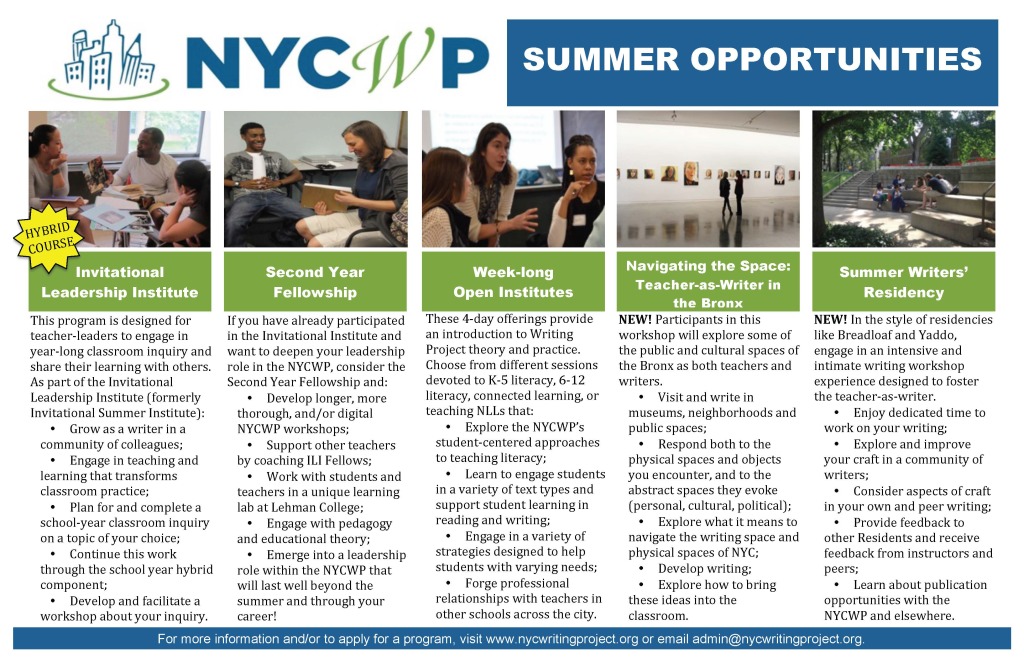

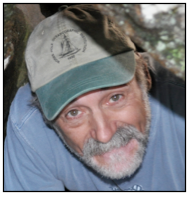


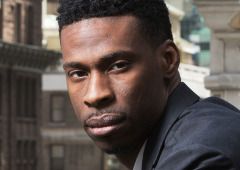

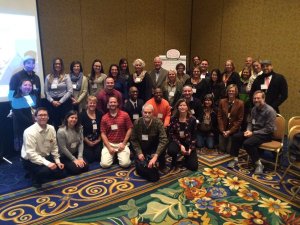
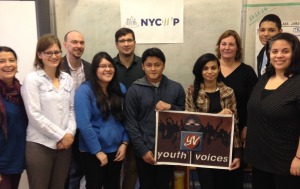
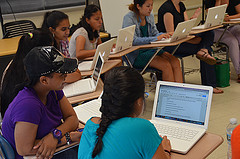
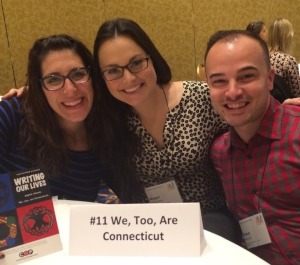
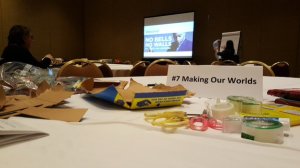
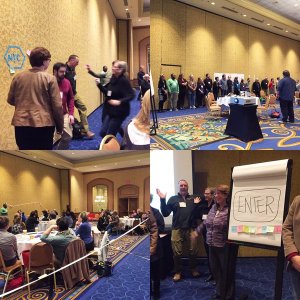

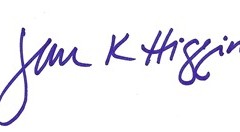
 MARINA LOMBARDO taught upper elementary students and served as an instructional coach at P.S. 94 in the Bronx for eight years before moving her practice outside of the city. Through her participation in the New York City Writing Project Elementary Leadership Program (2010-2013), Marina discovered her passion for inquiry-based learning and was eager to make it an integral part of her practice, both with students and herself. Integrating technology regularly became a major part of her focus and spending a summer working with the Youth Voices study group (2013) allowed her to continue to explore unique and current ways to connect students using multiple entry points. Marina received the NYCWP’s Second Year Fellowship in 2014 and has since facilitated several NYCWP workshops on NYC DOE Chancellor’s PD days. She is currently a co-facilitator of the NYCWP’s Summer Open Institute for teachers of grades K-8 and teaches grades 5 and 6 in Pocantico Hills, NY.
MARINA LOMBARDO taught upper elementary students and served as an instructional coach at P.S. 94 in the Bronx for eight years before moving her practice outside of the city. Through her participation in the New York City Writing Project Elementary Leadership Program (2010-2013), Marina discovered her passion for inquiry-based learning and was eager to make it an integral part of her practice, both with students and herself. Integrating technology regularly became a major part of her focus and spending a summer working with the Youth Voices study group (2013) allowed her to continue to explore unique and current ways to connect students using multiple entry points. Marina received the NYCWP’s Second Year Fellowship in 2014 and has since facilitated several NYCWP workshops on NYC DOE Chancellor’s PD days. She is currently a co-facilitator of the NYCWP’s Summer Open Institute for teachers of grades K-8 and teaches grades 5 and 6 in Pocantico Hills, NY.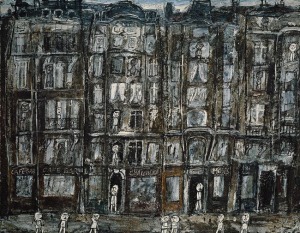
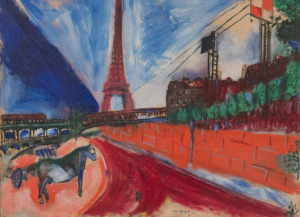
 Mindy Levokove is a multimedia performance poet and teaching artist. She has taught a variety of art subjects (including quilt making workshops, finger puppets, poetry, shadow puppet theater workshops, movement) as well as adult literacy, adult numeracy, and health and family literacy. She’s composed music and performed in her own and others’ theater and dance pieces and is a regular choreographer- site coordinator with Water Dances, an international dance and education group that “dances for water”, in multiple sites, all around the world, every other year. Recently, she’s been published in The Literary Review East, with another poem coming out this month; and next month, 3 poems will appear in the 12th Annual Brevitas Celebration Anthology. She is a proud member.
Mindy Levokove is a multimedia performance poet and teaching artist. She has taught a variety of art subjects (including quilt making workshops, finger puppets, poetry, shadow puppet theater workshops, movement) as well as adult literacy, adult numeracy, and health and family literacy. She’s composed music and performed in her own and others’ theater and dance pieces and is a regular choreographer- site coordinator with Water Dances, an international dance and education group that “dances for water”, in multiple sites, all around the world, every other year. Recently, she’s been published in The Literary Review East, with another poem coming out this month; and next month, 3 poems will appear in the 12th Annual Brevitas Celebration Anthology. She is a proud member.